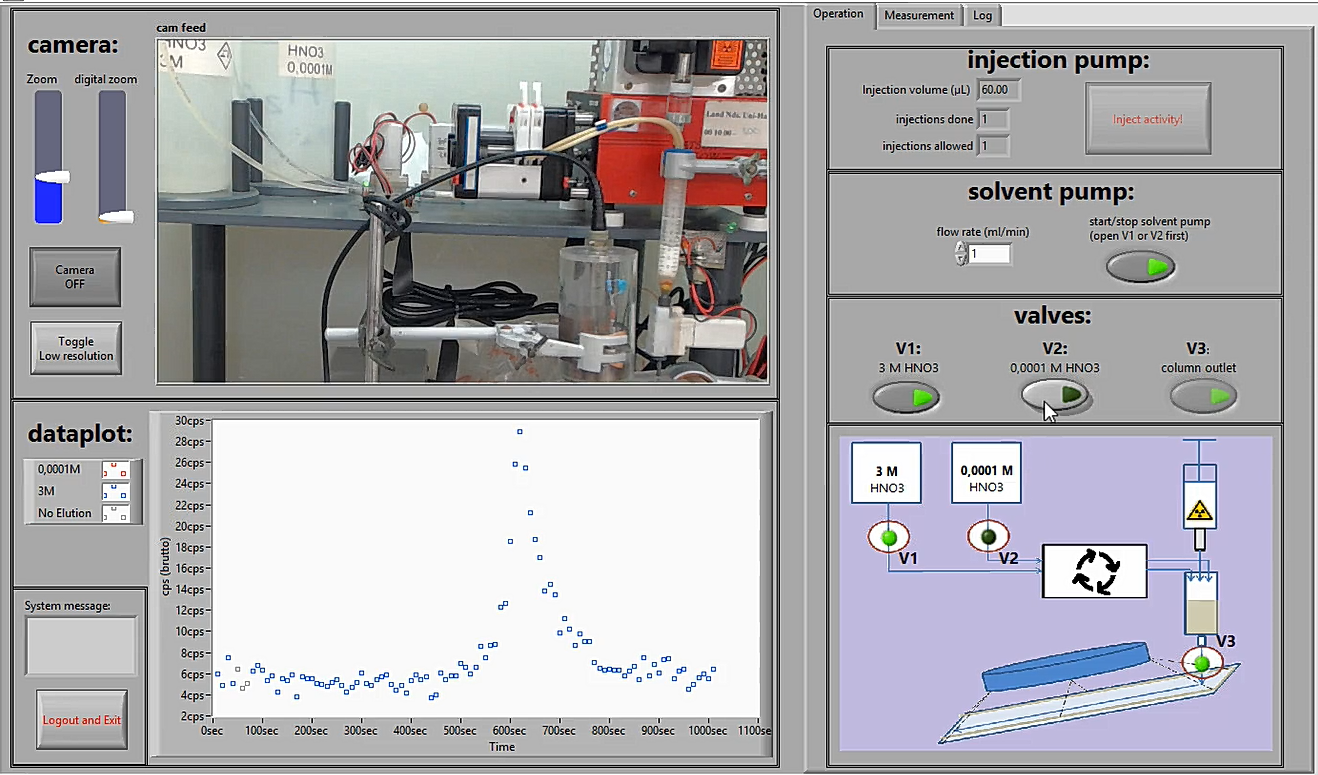Topic outline
-
The aim of the European MEET-CINCH consortium is to develop teaching material in nuclear and radiochemistry to attract more people to the field. The “high school teaching package” has been developed to make college students aware of career opportunities in this subject area. In this lesson, students will learn about radioactive isotopes, separation via column chromatography and applications of medical radiopharmaceuticals.
This lesson is built around the “Ionlab” experiment. Ionlab is an experiment that separates radioactive isotopes (90Sr/90Y) using a form of column chromatography. Yttrium-90 is an important radioisotope that can be used to treat liver cancer. The experiment is located at the University of Hannover in Germany but students can remotely control the experiment through the internet.
At the bottom of this page you can watch the experiment in fast-forward.

Figure 1. Ionlab user interface that allows student to remotely control the experiment
-
The student e-learning course can be found on “Radioisotopes: Student Page”. The “in-class” teacher material can be found on “Radioisotopes: Teacher Page”.
Please note that teachers will have to create an account and request permission to access the teacher page. You should receive confirmation after a few days. If not, please check your junk mail or contact pavel.bartl@fjfi.cvut.cz for assistance.
Once you have created an account, please email ionlab.access@gmail.com to request access to the Teacher Page.
-
To access the Ionlab experiment, teachers need to arrange a time slot with the University of Hannover. Please email “hanemann@irs.uni-hannover.de” with the name of your institution and your preferred date and time. Following this, teachers are required to create a Netop account; this will allow you to access and control the experiment. Please watch the short video below for further guidance.